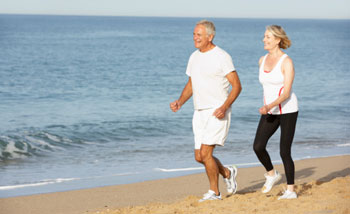-


-

- A ROBUST HEARTLIFESTYLE ADVISORY
-
Coronary artery disease results from atherosclerosis, which is an accumulation of plaque consisting of calcified cholesterol, and fat deposits on the injured inner part of the artery. This reduces the diameter (narrowing) of the coronary arteries that supply oxygen to the heart. The narrowing may result from an initial injury to the lining of the arteries due to either high blood pressure, high levels of LDL cholesterol, elevated blood glucose, or other chemical agents, such as those from cigarettes. A total blocking of the artery due to a clot results in myocardial infarction or heart attack.

BENEFITS
According to the American College of Sports Medicine, regular aerobic exercise decreases the heart rate and blood pressure which decreases the work load on the heart. Exercise also improves muscle function and improves the body’s ability to transport and deliver oxygen, thus decreasing fatigue. Exercise also decreases body weight and increases HDL cholesterol.
CAUTION
Coronary artery disease risk factors are: Hypertension, Diabetes Mellitus, Dyslipidemia, Smoking, Family History of Heart Ailment, Sedentary Lifestyle and Obesity. Always recommend a stress test prior to starting of any exercise program for these patients. Be aware of any danger signs such as chest pain or pain to the jaw or the shoulder or arm, giddiness, breathlessness or abnormal heart beats. If you experience any of these symptoms, all physical activity or exercise should be discontinued and immediate medical attention should be sought.
-
EXERCISE RECOMMENDATION
Exercises should be done under the supervision of a qualified person.
Type of exercise (Mode): According to the American College of Sports Medicine, large muscle group continuous exercise such as walking, bicycling, swimming is appropriate for endurance. Strength training should not be the main form of exercise but can be included under supervision. The intensity should be low and repetitions high. Always breathe out during exertion and never hold your breath.
Frequency: Minimum three consecutive days.
Intensity: Exercise recommendation is low to moderate intensity endurance exercise (lower end of heart rate range- 40-60% of Maximum Heart Rate (MHR).
Duration: The workout should include a warm up and cool down lasting approximately 10 minutes. Cardio workout can last for 20 to 40 minutes. Alternately, 10 minutes of three exercise bouts can also be beneficial.

TIPS
- Always follow the instructions given by the treating physician or cardiologist
- Reduce saturated fat and cholesterol from your diet
- Listen to music while exercising
- Do not undertake any sudden strenuous activity
- Increase your level of physical activity (walk at least 45 minutes to 1 hour daily)
- Eat more foods rich in fiber, such as fruits, vegetables and whole grains
- Maintain a healthy body weight
- Find ways to de-stress